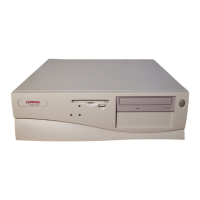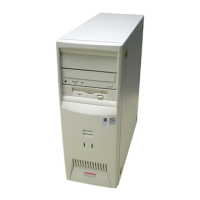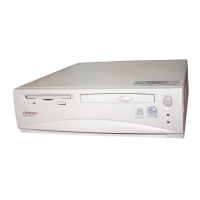Chapter 8 BIOS ROM
Compaq Deskpro Personal Computers
Third Edition - April 2001
8-20
Table 8-6. APM BIOS Functions
Table 8-6.
APM BIOS Functions
APM BIOS Function Description
APM Installation Check Allows the O/S to determine if the system's BIOS
supports the APM functionality and if so, which version of
the specification it supports. The APM version number
returned from this call is the highest level of APM
supported by the BIOS.
APM Real Mode Interface
Connect
Establishes the cooperative interface between the O/S and the
BIOS. The BIOS provides OEM-defined power management
functionality before the interface is established. Once the interface
is established, the BIOS and the O/S Driver coordinate power
management activities. The BIOS rejects an interface connect
request if any real or protected mode connection already exists.
APM Protected Mode 16-bit Initializes the 16-bit protected mode interface between the O/S and
the BIOS. This interface allows a protected mode caller to invoke
the BIOS functions without first switching into real or virtual-86
mode. This function must be invoked in real mode. This is not
currently used by any O/S.
APM Protected Mode 32-bit Iinitializes the 32-bit protected mode interface between the O/S and
the BIOS. This interface allows a protected mode O/S to invoke the
BIOS functions without the need to first switch into real or virtual-86
mode. This function must be invoked in real mode.
APM Interface Disconnect Breaks the cooperative connection between the BIOS and the O/S,
and returns control of the power management policy to the BIOS.
Power management parameter values (timer values, enable/disable
settings, etc.) in effect at the time of the disconnect remain in effect.
CPU Idle The O/S uses this call to tell BIOS that the system is idle.
CPU Busy Informs the BIOS that the O/S has determined that the system is
now busy. The BIOS should restore the CPU clock rate to full
speed.
Set Power State Sets the system or device specified in the power device ID into the
requested power state.
Enable/Disable Power
Management
Enables or disables all APM BIOS automatic power management.
When disabled, the BIOS does not automatically power manage
devices, enter the Standby State, enter the Suspend State, or take
power saving steps in response to CPU Idle calls.
Restore Power-On Defaults Re-initializes all power-on defaults.
Get Power Status This call returns the system current power status.
Get PM Event Returns the next pending PM event, or indicates if no PM events
are pending.
Get Power State Returns the device power state when a specific device ID is used.
Enable/Disable Device PM Enables or disables APM BIOS automatic power management for a
specified device. When disabled, the APM BIOS does not
automatically power manage the device.
APM Driver Version The O/S uses this call to indicate its level of APM support to the
BIOS. The BIOS returns the APM connection version number.
Engage/Disengage PM Engages or disengages cooperative power management of the
system or device.
Get Capabilities Returns the features which this particular APM 1.2 BIOS
implementation supports.
Get/Set/Disable Resume
Timer
This call gets, sets, or disables the system resume timer.
Enable/Disable Resume on
Ring
Enables or disables the system's resume on ring indicator
functionality. It also returns the enabled/disabled status.
Enable/Disable Timer Based
Request
Enables or disables the BIOS's generation of global Standby and
global Suspend requests based on inactivity timers.

